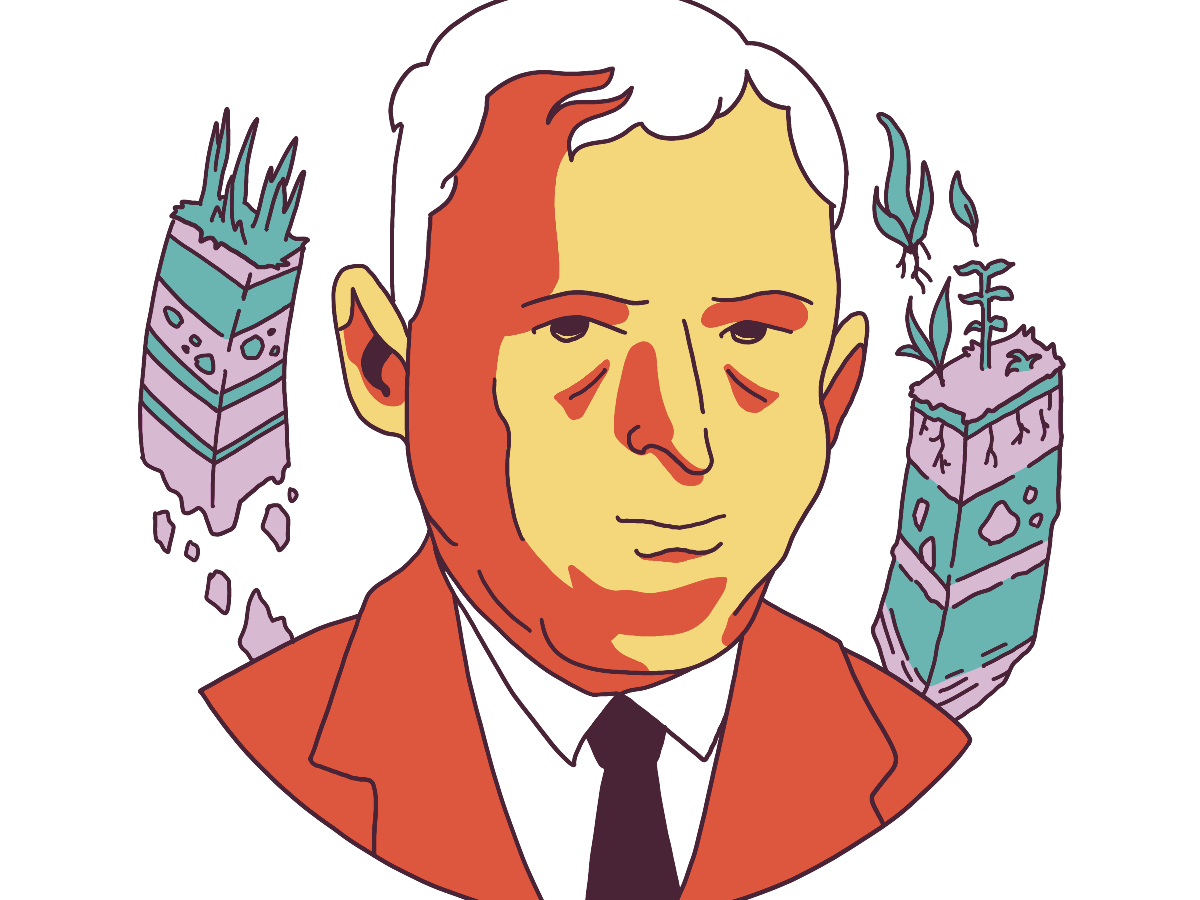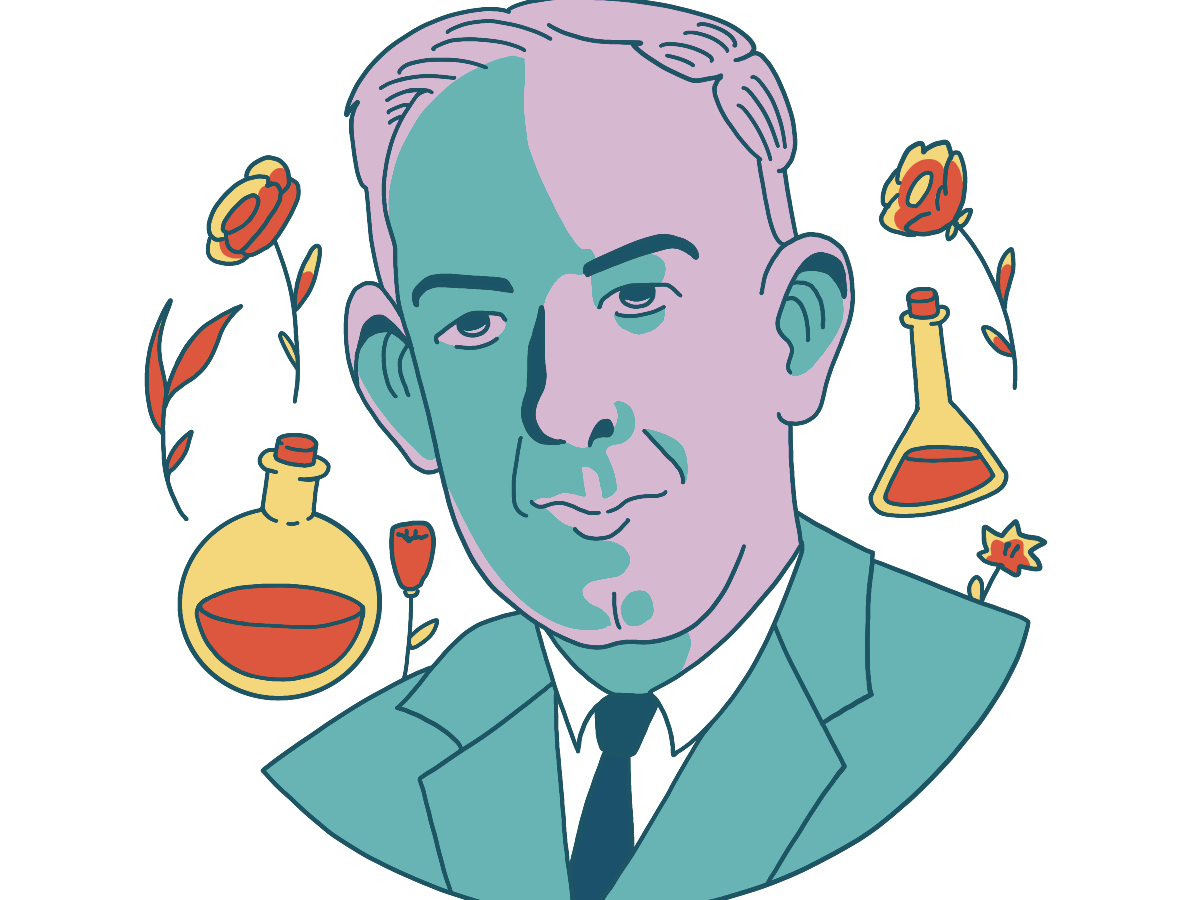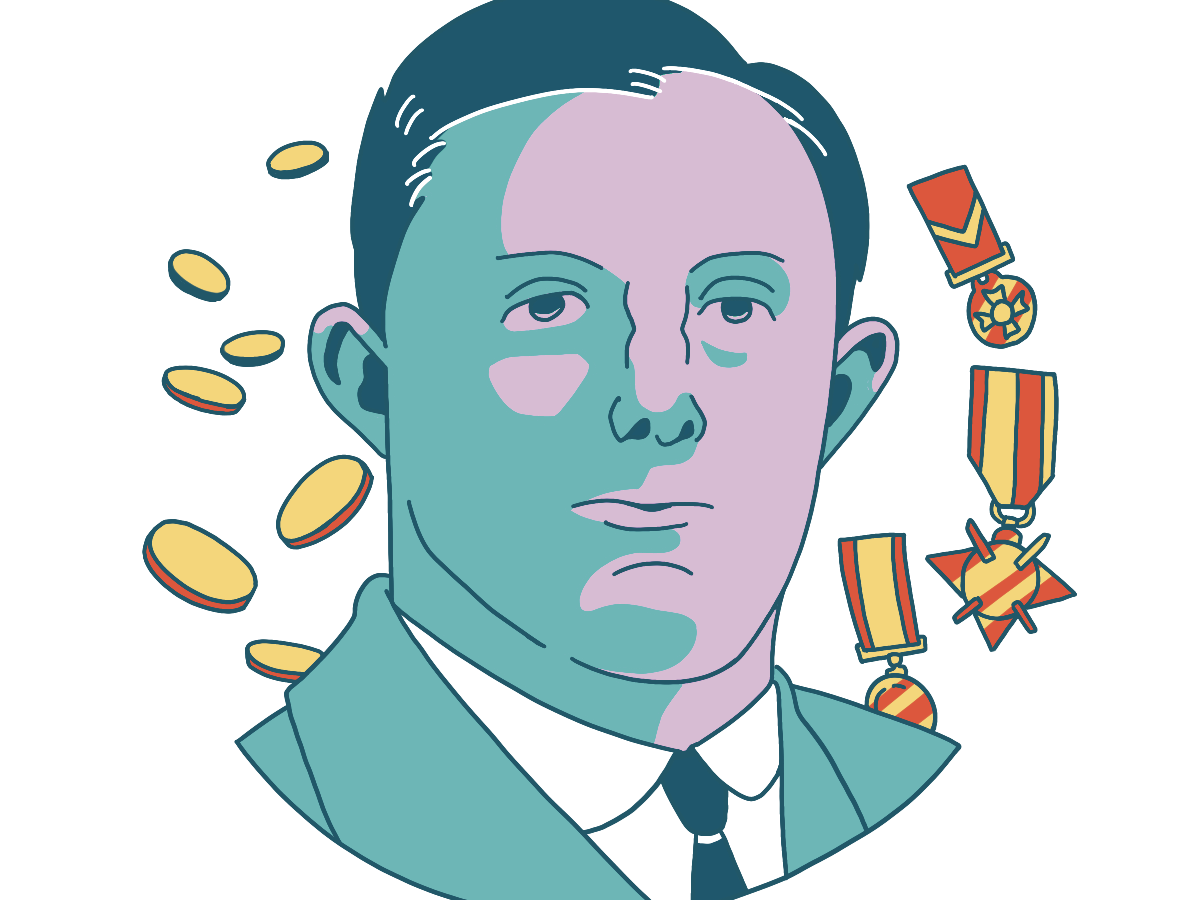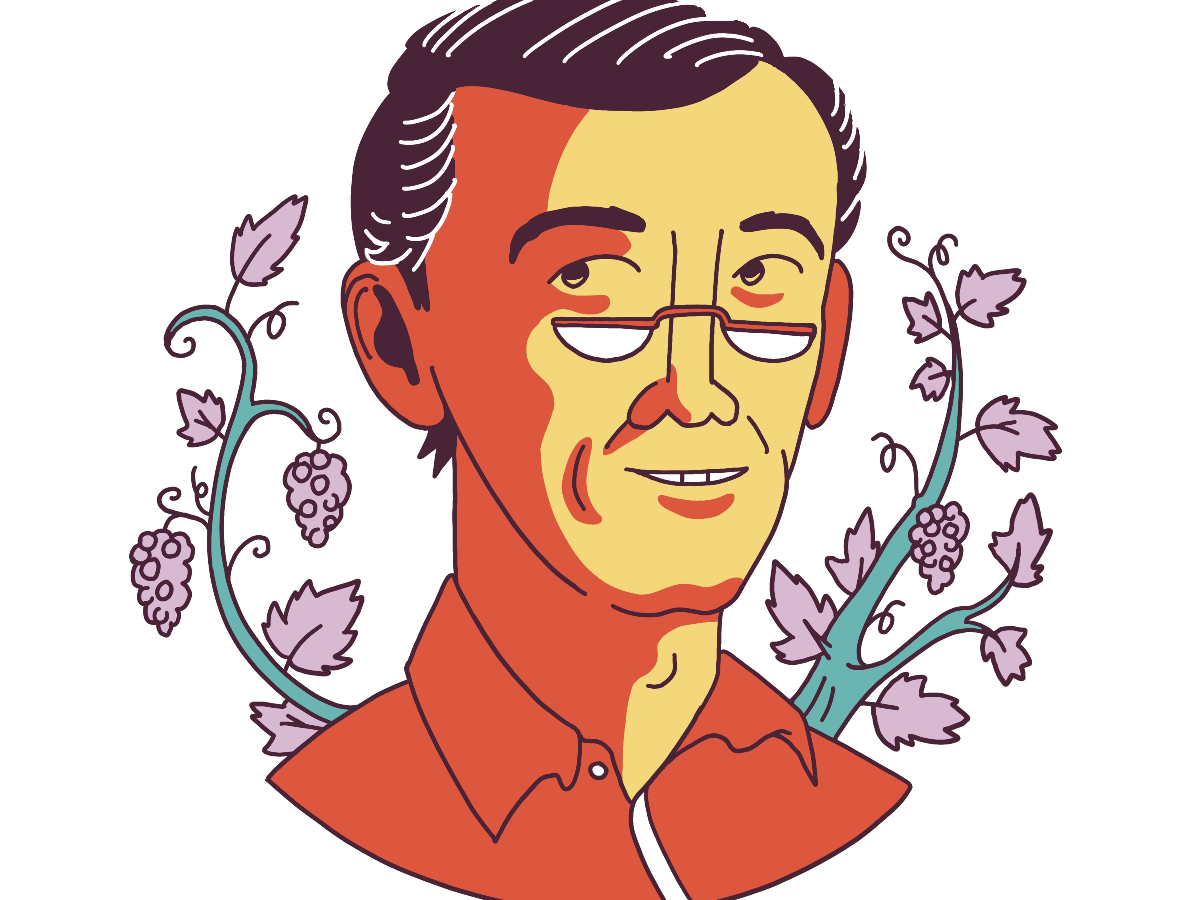Human infrastructure
Though Peter Waite’s name looms large over our eastern campus, there are many other prominent people who, through their research or riches, contributed to the University of Adelaide, WARI, or South Australian science, and earned a building dedication in response.

Herbert George ‘Andy’ Andrewartha
Andrewartha Gate
Herbert G. Andrewartha joined the Waite in the 1930s, bringing a stern interest in bugs. As an entomologist, Herbert (known as Andy) studied apple thrips and the plague grasshopper, and was often assisted by his biologist wife, Hattie. His book, The Distribution and Abundance of Animals, co-authored with Charles Birch, posited that animal abundance and distribution were influenced by their environment.

Murdoch Stanley McLeod
McLeod House
Through his passion for motorcycles, Murdoch Stanley McLeod began working in a bicycle and motorcycle shop in Jamestown in 1915. Upon the owner’s retirement, the business was offered to McLeod, which soon became M. S. McLeod’s Cycles. The business evolved into a fully fledged re-treader of motor vehicle tyres, and later a public company. As a benefactor, McLeod financed medical research and teaching at the University and provided funding for the Adelaide Women’s and Children’s Hospital.

Professor Harold William Woolhouse
Woolhouse Library
A botanist at heart, Harold William Woolhouse did not initially attend university upon finishing school, choosing instead to work for a year as a market gardener. Once he returned to study, Woolhouse delved into horticultural botany, receiving a Bachelor of Science from the University of Reading and a PhD from the University of Adelaide. Woolhouse became Director of the Waite in 1990, and oversaw the transformation of the Institute into the southern hemisphere’s premier plant-research institute.

Alfred ‘Alf’ Hannaford MBE
Hannaford Building
Working on his family farm near Riverton, a 24-year-old Alfred “Alf” Hannaford invented a wet-wheat pickling machine that prevented smut in wheat. He would soon give up farm work to focus on inventing and manufacturing agricultural machinery. Hannaford worked closely with Waite staff to improve the quality of cereal and pasture crops. Hannaford bequeathed $372,000 to the University for research in 1969, leading to a fellowship, workshops, lectures, and seminars.

John Kingsley Taylor OBE
Taylor Building
J.K. Taylor’s contributions to soil science within South Australia had a lasting impact. Taylor was appointed to undertake the first soils surveys for the CSIR Division of Soils, which proved incredibly valuable to the CSIR. He also established regional laboratories. Taylor was appointed as Deputy Chief and then later Chief of the Division in 1947.

John Stanley Davies
Davies Building
A pastoralist and beef cattle breeder who lived in Spalding, north of Clare, John Stanley Davies bequeathed the University of Adelaide $2 million in property in the late 1960s. The University continues his work as a cattle breeder through the Davies Livestock Research Centre, located at the Roseworthy campus.

John W. Holmes
JW Holmes Building
J. W. Holmes was a soil physicist whose work in the field led to Soil Physics (co-authored with T. J. Marshall), a highly regarded and widely used book by students and researchers alike. Through the successful implementation of his research into vertical movement of soil at various depths, Holmes determined suitable depths of footings for foundations on clay soils – instrumental in the design of housing foundations. In its inception during the 1980s, Holmes was appointed Chief of the Water Resources Division at the CSIRO.

Professor James Arthur Prescott
Prescott Building
Upon Professor James A. Prescott’s appointment as Chair of Agricultural Chemistry at the newly established Waite Agricultural Research Institute in 1924, he travelled widely to familiarise himself with the soil beneath his feet. Born in Lancashire, England, Prescott’s fascination and affinity for chemistry brought him to Australia, where his research determined the effect that climate, vegetation and other factors had on soils. Prescott served as Director of WARI from 1938 until 1955.

Edmund Alfred Cornish
Cornish Building
Edmund Alfred Cornish began with the Waite in the 1930s as a junior agrostologist, researching the relationship between meteorological variables and agricultural yields. During a leave of absence in 1937, Cornish worked with Sir Ronald Fisher at the University College, London, which led to the publication of the widely cited paper, Moments and cumulants in the specification of distributions. Following his appointment as Statistician upon his return to the Waite in 1938, Cornish led the CSIR’s newly created section of Mathematical Statistics. Cornish’s work became incredibly influential, and he was appointed Chief of the Division in 1954.

Sir Walter James Young
Walter Young Avenue
Working at Elder Smith & Co from age 15, Sir Walter James Young worked up to become Managing Director in 1929. Peter Waite, who was Chairman of the company at the time, had a close association with Young. After Waite’s death in 1922, Young was instrumental in the establishment of the Waite Agricultural Research Institute, serving as one of two representatives of the Waite benefaction. He provided financial expertise to the state and commonwealth governments throughout the First World War and Great Depression, and served as an advisor to Prime Minister Stanley Bruce on intra-imperial exchanges. He was a member of the University of Adelaide’s Council from 1924—1937.

Bruce Phillip Webb AM
Bruce Webb Crescent
From conducting one of the first geochemical surveys in Australia to becoming Chancellor of the University of Adelaide, Bruce Webb’s career and success stemmed from his interests in geology. As Director General of the SA Department of Mines, Webb was integral to opening the Cooper Basin oil and gas field. He chaired the South Australian Gartrell School of Mining, Metallurgy and Applied Geology, which eventually integrated into the establishment of the University of South Australia. Webb is regarded highly as both a businessman and a mining geologist. Following his death in 2000, the Geological Society of Australia created a medal in his honour, awarded annually for distinguished leadership in the earth sciences in South Australia.

Charles Allan Seymour Hawker
Charles Hawker Centre
Charles Allan Hawker was a highly regarded pastoral pioneer, politician, soldier and student, and was Australia’s first Minister for Commerce. A war hero, Hawker lost an eye and was, for a period, paralysed from the waist down. Hawker regained the use of his legs and wore surgical irons for the rest of his life. The C.A.S. Hawker Scholarship was established after his tragic death in the 1938 Kyeema air crash. It is one of the most generous privately funded residential scholarships available to undergraduate and postgraduate students in Australia.

Dr Bryan Coombe AM
Coombe Vineyard
Specialising in the growth and development of the grape vine and grape berry, Dr Bryan Coombe had 152 publications to his name – 106 of them being refereed journal articles. After graduating from the University of Adelaide in 1948, Coombe began his academic career at the University of California before returning to Adelaide to become a horticultural lecturer and researcher. Coombe was a world leader in the field of grape berry development, and nationally recognised for his service to the development of the Australian grape and wine industry by being awarded a Member of the Order of Australia.
Written by Isaac Freeman
Illustrations Mitch Hearn
